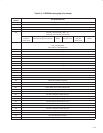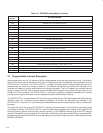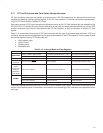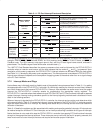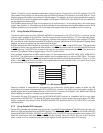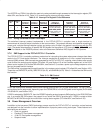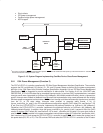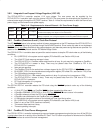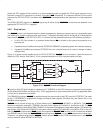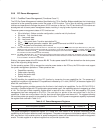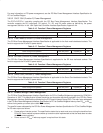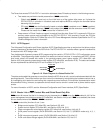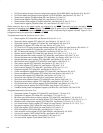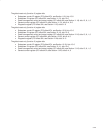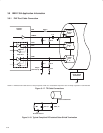
3−23
3.8.5 16-Bit PC Card Power Management
The COE bit (bit 7) of the ExCA power control register (ExCA offset 02h/42h/802h, see Section 5.3) and PWRDWN
bit (bit 0) of the ExCA global control register (ExCA offset 1Eh/5Eh/81Eh, see Section 5.20) are provided for 16-bit
PC Card power management. The COE bit places the card interface in a high-impedance state to save power. The
power savings when using this feature are minimal. The COE bit resets the PC Card when used, and the PWRDWN
bit does not. Furthermore, the PWRDWN bit is an automatic COE, that is, the PWRDWN performs the COE function
when there is no card activity.
NOTE: The 16-bit PC Card must implement the proper pullup resistors for the COE and
PWRDWN modes.
3.8.6 Suspend Mode
The SUSPEND signal, provided for backward compatibility, gates the PRST (PCI reset) signal and the GRST (global
reset) signal from the PCI7x21/PCI7x11 controller. Besides gating PRST
and GRST, SUSPEND also gates PCLK
inside the PCI7x21/PCI7x11 controller in order to minimize power consumption.
It should also be noted that asynchronous signals, such as card status change interrupts and RI_OUT
, can be passed
to the host system without a PCI clock. However, if card status change interrupts are routed over the serial interrupt
stream, then the PCI clock must be restarted in order to pass the interrupt, because neither the internal oscillator nor
an external clock is routed to the serial-interrupt state machine. Figure 3−14 is a signal diagram of the suspend
function.
RESET
GNT
SUSPEND
PCLK
RESETIN
SUSPENDIN
PCLKIN
External Terminals
Internal Signals
Figure 3−14. Signal Diagram of Suspend Function
3.8.7 Requirements for Suspend Mode
The suspend mode prevents the clearing of all register contents on the assertion of reset (PRST or GRST) which
would require the reconfiguration of the PCI7x21/PCI7x11 controller by software. Asserting the SUSPEND
signal



